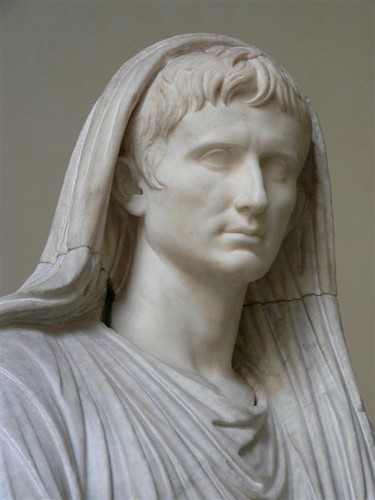
I recommend reading the full article in National Geographic magazine. It is accompanied by some breathtaking pictures of some of the items that have been recovered including an ornate greave in the shape of a goddess with her face over the portion that covers the knee cap.
Carol Kaufmann:
Archaeologist Andrej Gaspari is haunted by pieces of the past. His hometown river, the Ljubljanica, has yielded thousands of them?Celtic coins, Roman luxuries, medieval swords?all from a shallow 12-mile (19 kilometers) stretch. Those who lived near and traveled along the stream that winds through Slovenia's capital of Ljubljana considered it sacred, Gaspari believes. That would explain why generations of Celts, Romans, and earlier inhabitants offered treasures?far too many to be accidental?to the river during rites of passage, in mourning, or as thanksgiving for battles won.
But Gaspari may never be able to explain for certain why the Ljubljanica holds one of Europe's richest stores of river treasures, many of them remarkably preserved by the soft sediments and gentle waters. Too many pieces of the puzzle have already disappeared.
During the past two decades, sport divers have made the river their playground, removing most of some 10,000 to 13,000 objects found so far. Even though removing artifacts from the Ljubljanica has long been illegal, professional archaeologists have been forced to compete with private collectors. Some divers sold their loot to museums; others to the highest bidder. Some kept their treasures private. Many artifacts have left the country, untraceable. Gaspari's greatest torment comes from the knowledge that few maverick collectors know?or care?where exactly their prizes were found. For an archaeologist, an object's meaning comes as much from its context?location, association with other objects?as from the prize itself. Without context, there is no story.



















 new museum has taken 10 years to be realized. But even now, as work continues on the $24 million glass and travertine marble structure, which stands between a busy highway overlooking the River Tiber and the Mausoleum of Augustus, Rome's mayor, Walter Veltroni, went ahead with its scheduled inauguration on Friday because April 21 was, at least in theory, the city's 2,759th birthday.
new museum has taken 10 years to be realized. But even now, as work continues on the $24 million glass and travertine marble structure, which stands between a busy highway overlooking the River Tiber and the Mausoleum of Augustus, Rome's mayor, Walter Veltroni, went ahead with its scheduled inauguration on Friday because April 21 was, at least in theory, the city's 2,759th birthday.


